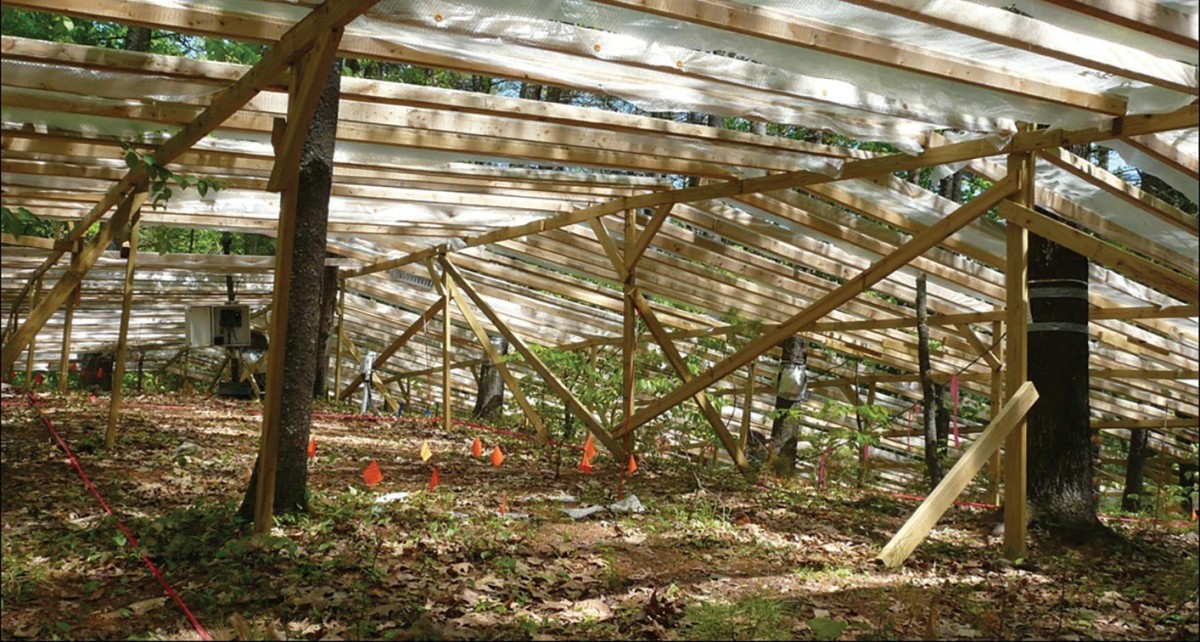
The drought that most of New England experienced last summer and fall is likely to slow the growth of white pines and red oaks this year. That’s the prediction from a University of New Hampshire (UNH) researcher based on a five-year drought study at a forest in Durham.
Beginning in 2015, Heidi Asbjornsen, associate professor and program coordinator for UNH’s Department of Natural Resources and the Environment, used a system of gutters to remove 50 percent of the rainwater falling on 30-by-30-meter plots in a mixed white pine-red oak forest. Her study coincided with natural droughts in 2016 and 2020 that pushed her experimental ecosystem to a level of drought it may never have experienced before.
She found that the two species of trees responded quite differently to drought conditions. “The pines showed a much more pronounced growth reduction in response to the drought – a 50 percent reduction compared to 18 percent for the oaks,” said Asbjornsen. “And following the drought year, the pines started to recover their growth while the oaks appeared to continue to decline in their growth slightly. It looks like there was more of a lag effect for the oaks.”
According to Asbjornsen, white pines “avoid drought” by closing their stomates to prevent the expected water loss and protect their tissues from desiccation. This reduces growth because the trees cannot absorb enough CO2 to photosynthesize.
Oaks, on the other hand, can tolerate lower soil moisture levels because they have more resistant sapwood, enabling them to continue to photosynthesize during drought conditions. They also have deeper roots and thicker leaves that help them survive moderate droughts.
“But that doesn’t mean that one or the other will survive better in the long term,” Asbjornsen said. “We didn’t observe any mortalities in our experimental drought, so that suggests that both trees are highly resilient. We just don’t know the limits of their resiliency. We don’t know the tip¬ping point when these species experience a threshold level of moisture stress where they won’t be able to recover.”
Although nothing can be done to reduce the chances of drought, Asbjornsen said that forest managers can take steps to increase the resilience of their forests by thinning the trees to reduce competition for water. In the lon¬ger term, managers may consider a new silvicultural tool called assisted migration that involves planting tree species or gen¬otypes that are better adapted to moisture stress and the climate conditions expect¬ed in the future.
As for the impact of the 2020 drought on local trees, Asbjornsen said it will largely depend on the level of precipita¬tion the area receives this year. “Following the 2016 drought, our experiment saw some tree growth recovery the follow¬ing year when there was more normal precipitation, especially with white pines,” she said. “The take-home message is that we would expect a much bigger impact on the forest if we have subsequent years of drought than just one year of drought.”

